TCEA 2017: E-Rate Experts Urge Advocacy
EdTech Magazine
FEBRUARY 10, 2017
By Jena Passut With a new administration, FCC funds are safe — for now.
This site uses cookies to improve your experience. By viewing our content, you are accepting the use of cookies. To help us insure we adhere to various privacy regulations, please select your country/region of residence. If you do not select a country we will assume you are from the United States. View our privacy policy and terms of use.

EdTech Magazine
FEBRUARY 10, 2017
By Jena Passut With a new administration, FCC funds are safe — for now.

SETDA Says
DECEMBER 21, 2017
2017 was a great year for state leadership for educational technology. SETDA engaged members, affiliates, private sector partners, and partner organizations around federal and state advocacy efforts and provided national leadership for broadband, digital instructional materials, and data interoperability.
This site is protected by reCAPTCHA and the Google Privacy Policy and Terms of Service apply.

Edsurge
JANUARY 3, 2017
It’s no small feat making Forbes “30 Under 30” roundup, which in 2017 boasts an acceptance rate of less than 4 percent. And although no current classroom teachers are included this year, 2017 brought with it another batch of former Teach for America (TFA) educators. Shots at getting into Stanford and Harvard are both higher.)

Waterford
JULY 9, 2020
Marley was able to donate more than 9,000 books through the program, and at the 2017 Forbes’ Women Summit , she said of her experience, “I’m working to create a space where it feels easy to include and imagine black girls and make black girls like me the main characters of our lives.”. Sophie Cruz. like her parents. Jasilyn Charger.
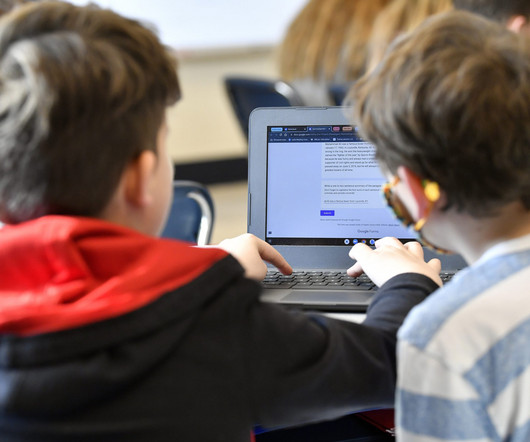
The Hechinger Report
FEBRUARY 1, 2024
The update of the policy document by the DOE’s Office of Education Technology is the first since 2016 (parts of it were revised in 2017).

EdTech Magazine
APRIL 24, 2018
Research from School Library Journal indicates that maker activities at elementary and middle schools increased by 4 percent from 2014 to 2017. It’s a creative space where students not only can build things, but also create things, such as a new advocacy program on a social issue. “In For its part, St.

NeverEndingSearch
AUGUST 15, 2017
These are all things I do for free anyway, but it should be a great education/advocacy opportunity. At the event, I will give them a coupon book full of free library services (one free poster print, one free resource curation for a project, one free collaboration, o ne free booktalk , etc.)

Waterford
APRIL 10, 2020
Vistas Online Journal, 2017, pp. The Professional Counselor, 2017, 7(3), pp. National Immigrant Women’s Advocacy Project, June 2014, pp. Retrieved from bls.gov: [link]. Thomas, D.A., and Morris, M.H. Creative Counselor Self-Care. Coaston, S.C. Self-Care Through Self-Compassion: A Balm for Burnout. and Molina, M.

The Learning Revolution Has Begun
JULY 18, 2023
Garcia-Febo is worldwide known for her passion about diversity, communities, sustainability, innovation and digital transformation, library workers, library advocacy, wellness for library workers, and new librarians about which she has taught in 44 countries. President of the American Library Association 2018-2019.

Edsurge
JANUARY 25, 2023
In 2017, I formed an after-school student activism and leadership club with a small group of seventh grade students. For my students, leading this PD session and experiencing a shift in the traditional power dynamic opened up a new sense of advocacy possibilities.
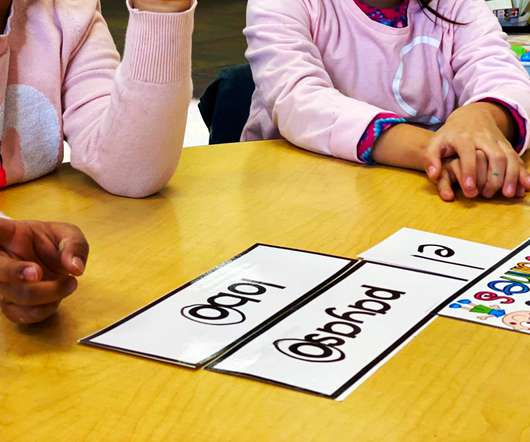
The Hechinger Report
JULY 5, 2021
And between 1976 and 2017, the Latino proportion of all students enrolled in college rose from 4 to 19 percent. Amanda Fernandez is CEO and founder of Latinos for Education ; Dr. Feliza Ortiz-Licon is chief policy and advocacy officer. Unfortunately, the pandemic has set us back several years.

The Hechinger Report
OCTOBER 22, 2018
But since it wasn’t our house, they could use the bathroom first,” Kimberly, 12, told the child advocacy organization Children’s Defense Fund for their The State of America’s Children 2014 report. percent or higher in suburban, town, and rural districts,” according to a 2017 report from the National Center for Education Statistics (NCES).

The Hechinger Report
MAY 6, 2019
“We see kids whose challenges don’t show up on their report card, so they aren’t getting services,” said Jennifer Choi, a parent and founder of the advocacy group 2eNYC and a trustee of the nonprofit Twice Exceptional Children’s Advocacy. That was the case with Santiago’s son.
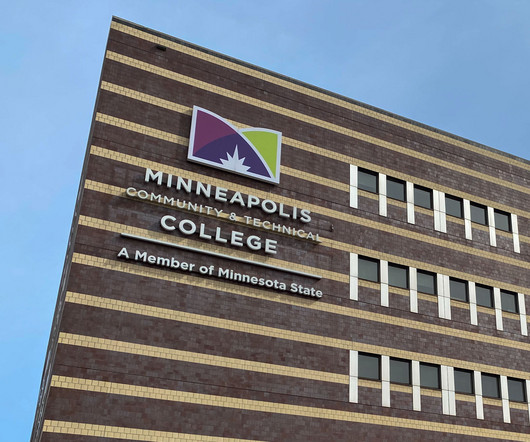
The Hechinger Report
APRIL 7, 2024
But it’s only in the last dozen or so years that programs began popping up at community colleges; Minneapolis College’s program, opened in 2017, was the first in Minnesota and the fifth in the nation. Today, more than 170 programs exist across the U.S. and Canada.

Edsurge
SEPTEMBER 12, 2023
For the 2017-18 academic season, for example, 71 percent of Common App users who did not submit an application through the platform still attended college within the next academic year, according to the analysis. Their advocacy work has already begun, one high school senior at a time. “At

Edsurge
OCTOBER 28, 2017
Project Unicorn is an advocacy initiative focused on improving data interoperability within K-12 education. Project Unicorn is an education advocacy initiative that got started in May 2017; so far, some 200 school systems, representing 2 million students, have signed on to support the effort.

The Hechinger Report
MARCH 1, 2022
As of 2017, 87 percent of those who defaulted within 12 years of enrolling in college had received a Pell Grant at some point, meaning that they had a household income of less than $40,000. Michele Streeter is the associate director of Policy and Advocacy at The Institute for College Access & Success.

The Hechinger Report
MARCH 8, 2022
Miriam Hamburger, a 2017 religious studies graduate from Occidental College, is a good example. Caroline Condren, a 2013 English BA recipient from Colorado College, works as a senior development and communications manager at a documentary film company that melds content production and social advocacy.

Edsurge
NOVEMBER 5, 2019
In 2017, a New York Times analysis found the institution had the highest median parent income of 27 higher selective public colleges, at $154,000. Low-income students really feel out of place at Michigan,” says Camille Mancuso, a junior and the vice president of the Michigan Affordability and Advocacy Coalition student group.

eSchool News
MARCH 16, 2018
In a letter to the Institute of Education Sciences , a number of ed-tech and advocacy organizations point out that many students lack home access to the internet connectivity they need to complete homework and use online learning resources. “This is critical.”

Edsurge
MARCH 1, 2017
Jahliel Thurman (Vice President of Uplift Entertainment) and Shalon Bell (Director of Strategic Alliances at the Atlanta Voice)—will discuss how despite limited monetary capital, these institutions continue to boost students’ potential in graduate education, entrepreneurship and advocacy through human capital.

The Learning Revolution Has Begun
MARCH 13, 2024
Garcia-Febo is worldwide known for her passion about diversity, communities, sustainability, innovation and digital transformation, library workers, library advocacy, wellness for library workers, and new librarians about which she has taught in 44 countries. President of the American Library Association 2018-2019.
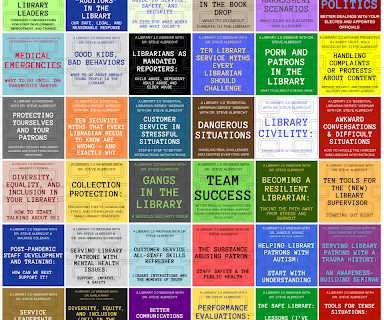
The Learning Revolution Has Begun
SEPTEMBER 7, 2023
Garcia-Febo is worldwide known for her passion about diversity, communities, sustainability, innovation and digital transformation, library workers, library advocacy, wellness for library workers, and new librarians about which she has taught in 44 countries. President of the American Library Association 2018-2019.

Reading By Example
FEBRUARY 17, 2018
Since I could not think of something to write for this month’s newsletter, I thought I would share some of the titles I most enjoyed from 2017. This social media site for bibliophiles allows people to connect with other readers, recommend titles to friends, and discover new books to read. Funny and wise.).
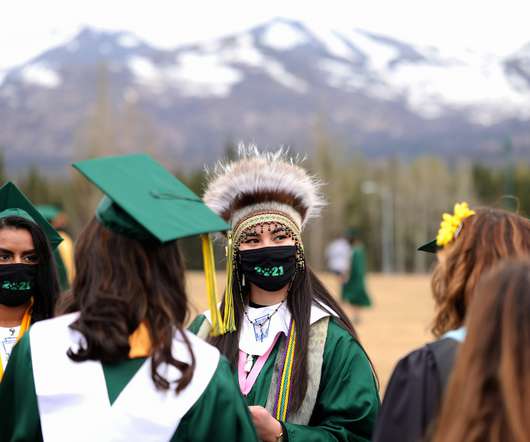
The Hechinger Report
JUNE 16, 2021
Across the country, some state lawmakers have begun to respond to the demands of student activists and Native advocacy organizations. California’s 2018 law followed on the heels of similar legislation in Montana, which in 2017 became the first state in the nation to protect Native students’ right to wear regalia.

The CoolCatTeacher
FEBRUARY 15, 2018
She is the 2017 New Jersey State School Counselor of the Year. Angela’s advocacy has earned her recognition, most recently the “2017 NJ State School Counselor of the Year” award and was featured in Amy Poehler’s Smart Girls blog. School Counselors Helping More Women Go Into Computer Science. Date: February 5, 2018.

Edsurge
JUNE 18, 2020
In 2017, 53 percent of the students in the K-12 public education system in the United States were Black, Latinx, Asian/Pacific Islander, Indigenous or multiracial. It’s a longstanding national crisis, often referred to as the “digital divide,” which at Kapor Capital we identify as one of the cumulative barriers across The Leaky Tech Pipeline.

The Learning Revolution Has Begun
FEBRUARY 15, 2023
Garcia-Febo is worldwide known for her passion about diversity, communities, sustainability, innovation and digital transformation, library workers, library advocacy, wellness for library workers, and new librarians about which she has taught in 44 countries. President of the American Library Association 2018-2019.

The Hechinger Report
JULY 18, 2017
“We think that’s the hardest work left,” said Brennan McMahon Parton, director of policy and advocacy at the Data Quality Campaign. “We The new report , “Time to Act 2017: Put Data in the Hands of People,” catalogs how the evolving use of data has influenced policy and teaching practices over the last 10 years.
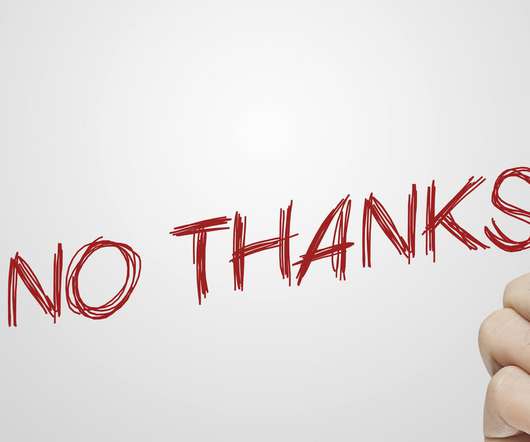
Edsurge
FEBRUARY 27, 2020
Public Interest Research Group , a nonprofit advocacy organization that takes a skeptical view of publishers’ efforts to automatically bill students for pre-packaged commercial course materials. That’s the conclusion of a new report from U.S. Using open-records requests, U.S.

The Learning Revolution Has Begun
JANUARY 30, 2023
Garcia-Febo is worldwide known for her passion about diversity, communities, sustainability, innovation and digital transformation, library workers, library advocacy, wellness for library workers, and new librarians about which she has taught in 44 countries. President of the American Library Association 2018-2019.

eSchool News
JUNE 21, 2023
Dr. Belinda Anderson, Principal, Chester County Junior High School, praised Darlene’s advocacy, stating, “School Counselor Darlene Goff’s unwavering dedication and innovative approach have revolutionized the educational experience at Chester County Junior High School. Her commitment to student success is truly inspiring.”

The Learning Revolution Has Begun
JANUARY 31, 2024
Garcia-Febo is worldwide known for her passion about diversity, communities, sustainability, innovation and digital transformation, library workers, library advocacy, wellness for library workers, and new librarians about which she has taught in 44 countries. President of the American Library Association 2018-2019.

Edsurge
JULY 2, 2019
Founded in 2017, Roybi now has six full-time employees. Even when not in a classroom, certain toys must adhere to the federal Children’s Online Privacy Protection Act, commonly called COPPA. Anything involving video and audio and children is uniquely sensitive,” she adds.
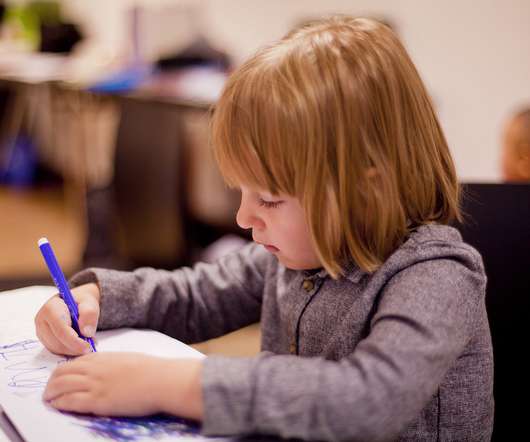
Waterford
JANUARY 14, 2020
The Science of Early Life Toxic Stress for Pediatric Practice and Advocacy. Academic Pediatrics, 2017, 17(8), pp. The Lifelong Effects of Early Childhood Adversity and Toxic Stress. Pediatrics, January 2012, 129(1), pp. Johnson, S.B., Riley, A.W., Granger, D.A., and Riis, J. Pediatrics, February 2013, 131(2), pp. Marques, S.S.,

eSchool News
OCTOBER 26, 2017
Online registration and enrollment aren’t novel ideas in 2017; they are a convenience parents expect and a tool any registrar will appreciate. Tech-friendly districts understand the impact of a positive first impression on job satisfaction, advocacy, and retention. Not anymore.

Edsurge
APRIL 15, 2020
Nearly 19 million students applied for financial aid during the 2017-2018 year, according to the U.S. Along the way, Seldin enlisted the help of 17 colleges and higher-ed advocacy organizations, including the National Association of Student Financial Aid Administrators, to review, test and spread the word about the website.

Edsurge
OCTOBER 28, 2017
Visualized, the framework can be seen this way: Image Credit: Future Ready Schools In 2017, Future Ready Schools launched a series of five collaborative strands, guided by 75 leading school practitioners from across the country, to further support leaders guiding their communities.

Edsurge
FEBRUARY 21, 2019
A 2017 study from the lab found that nearly two thirds of community college students are food insecure. At a morning panel on Thursday, Sara Goldrick-Rab, professor of higher education Policy at Temple University, started the conversation by providing some context and statistics from the Wisconsin HOPE Lab, which she founded.

The Hechinger Report
OCTOBER 10, 2018
It just goes against everything we know about child development and what’s best for children,” said Josh Golin, executive director of the nonprofit advocacy group Campaign for a Commercial-Free Childhood. They are more likely to graduate from high school and are less likely to be held back.

The Learning Revolution Has Begun
DECEMBER 28, 2023
Garcia-Febo is worldwide known for her passion about diversity, communities, sustainability, innovation and digital transformation, library workers, library advocacy, wellness for library workers, and new librarians about which she has taught in 44 countries. President of the American Library Association 2018-2019.

The Hechinger Report
JULY 15, 2019
In contrast, while nearly one in five college students has some type of disability, according to the National Center for Education Statistics, the median percentage across all institutions of undergraduate students formally registered as having a disability was only 6 percent in 2017. Related: Twice exceptional, doubly disadvantaged?

The CoolCatTeacher
JUNE 5, 2019
This show with Tom Loud aired in September 2017 but because iTunes only keeps 297 of the most recent shows, we wanted to take the summer opportunity to share the most inspirational shows from the 10 Minute Teacher podcast. For guests and hyperlinks to resources, scroll down. You know, what do we say to ourselves?
Expert insights. Personalized for you.
Are you sure you want to cancel your subscriptions?


Let's personalize your content